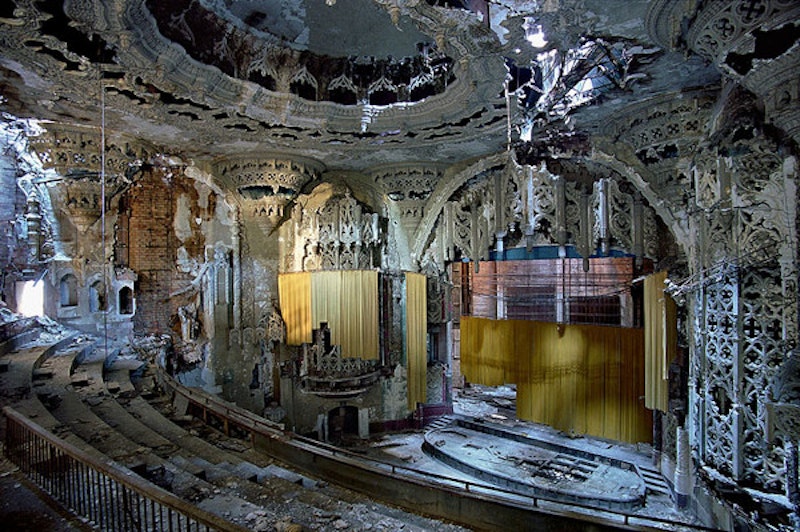During a recent visit to Detroit I was reminded of why I felt so pulled towards the city while I was a student at the University of Michigan. For starters, it’s rich musical history lives on in a bevy of fantastic record stores while a still vital scene thrives in venues across town – legal or otherwise. More importantly, Detroit is just downright fascinating; there aren’t many other American cities whose rise and subsequent fall are so visible from the street. That what was once one of America’s greatest cities is now a symbol for urban decay and violence is a shame, but so too would be neglecting to ask “how did this happen?”
If I found myself considering a move to Motown, with the cheap rent and inclusive artistic community (and did I mention records?), I rather quickly dismissed those thoughts. I live in a radically different place, and frankly the Bay Area has spoiled me.
There’s a rather strong Michigan contingent in Oakland, and I’d like to think I convinced most of them to move out here. The truth is, people having been moving from the Midwest to California for a lot longer than I’ve been alive. Still, I meet a lot of people with severe misconceptions about Detroit. Apparently lacking family in the area, Detroit isn’t exactly a vacation destination – so unless you’re from there you likely haven’t been there.
I had someone recently tell me, with a straight face, that Detroit had a “massive wild dog problem.” She claimed there were packs of wild dogs roaming the city, and their population recently eclipsed that of the residents. She said, “People are constantly fearful of attacks, which is why nobody rides a bike.” Are there half a million wild dogs terrorizing Detroit? Really?
It goes both ways though – I had someone in Detroit let out one of those long, low whistles when I told him I lived in Oakland. He asked me, “Isn’t it pretty rough out there?” I thought my puzzled look was enough of an answer. And yet, people constantly make the comparison between Detroit and Oakland. I’ll concede – Oakland has some rough neighborhoods, but anyone who thinks that the two cities have anything beyond coincidental similarities hasn’t spent time in both.
Oakland didn’t lose two thirds of its population in twenty years. After World War II Detroit was the third largest city in America (in terms of population), now there are over 18,000 buildings waiting to be demolished. To put things in perspective, Detroit covers almost the exact same square mileage as Atlanta. Metro Detroit has a little over 700,000 people; Atlanta has over five million. Oakland’s principle industry didn’t require a bail out. Oakland has excellent public transportation. Oakland has no winter! I could go on…
Yet, not many people look beyond the sensationalism and ask how exactly things got to be the way they are. If the ruins of Detroit are beautiful, it’s because the era of it’s prosperity was unparalleled. And yet, it crumbled, quickly. The common perception chalks it up to the fall of the auto industry, and subsequently white flight. Some might point to the riot in 1967, or even the first black mayor in 1973, and the political corruption associated with his tenure. These explanations seemingly make sense, but the real roots of Detroit issues go much deeper.
Perhaps because of cognitive dissonance, not many people realize that it was a housing shortage that crippled Detroit, because so many buildings lay vacant now. It shouldn’t come as much of a surprise that when Detroit grew so big, so fast, the first group to be marginalized were black people. The segregation and discrimination that were rotting away the industrial foundation Detroit was built on were prevalent during its rise and indeed were the main factors precipitating its fall. However, there is a reason race is intertwined with unemployment, poverty and central city residence, not only in Detroit, but across post-industrial America – and the fault doesn’t solely lay with capitalism’s repeated pattern of generating inequality, just with the reality that African American’s have borne the brunt of that inequality.
In Part Two: How a lack of public housing, and differing interpretations of The New Deal shaped the city and led to the rift that tore the city apart.

